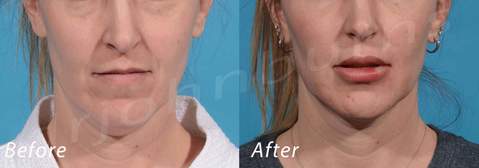
The appearance of your neck, jawline, and cheeks naturally change over time thanks to aging, genetics, sun exposure, and gravity. A facelift is a surgical procedure designed to address these concerns. You may choose a full facelift to address aging concerns throughout your face or a lower face lift to rejuvenate just the bottom third of your face. A well-done facelift can reposition the anatomy of the face and provide a more youthful look without leaving a pulled or stretched effect. That means that choosing the right doctor to perform your face lift surgery is essential to achieving optimal results. However, what you do after your surgery also plays a significant role, both in the speed of your recovery and your final results. Here is some information on what to expect and how to take care of your face after a full or mini face lift.
Get lots of rest
It will be imperative during the week after your procedure that you rest a lot and have someone available to help you with your regular daily activities. Sleeping on your back with your head elevated on two pillows will help minimize swelling and bleeding and promote healing. In general, swelling and bruising worsen over the first several days before beginning to improve gradually.
It’s important to avoid any heavy lifting or forceful pushing or pulling during the first few weeks post-op. You will also need to avoid intensive chewing when eating, as this can put excessive pressure on your stitches. Do not drink anything hot, such as coffee or tea that might introduce steam onto your face. Also, for the first six weeks, avoid participating in any strenuous sports, exercise, or work.
It’s a good idea to plan and take at least a week to stay at home and rest. After face lift surgery, the area treated will look swollen and bruised for a week or so, and this may be slightly alarming. However, after a week or two, you will most likely look enough like yourself again to resume your social activities (still avoiding anything strenuous).
Although you should avoid heavy or demanding work or sports, you should still stay moderately active. Mild activities such as walking are good for your circulation and, therefore, healing. It’s normal to feel emotional during this healing period. Even after a lower face lift or mini face lift, you may be taken aback by the appearance of your post-op face. Keep in mind that, after a few weeks, you will look more beautiful than ever – the whole reason you had surgery in the first place.
Post-op consultation and removal of stitches
Be sure to keep any post-op follow-up appointments your doctor requests to ensure that everything is going well, and your face is healing normally. Between five and 14 days after your procedure, it will be time to remove your stitches. Removing your stitches is a simple, quick procedure that even your nurse or PCP can perform. If you have received dissolvable stitches, they will not require removal; they will simply dissolve in place within approximately six weeks.
About non-surgical face lift
Non-surgical face lift, or minimally invasive facelift, is one of a variety of procedures designed to provide a rejuvenated, refreshed facial appearance. These types of procedures include facial injectables and laser resurfacing treatments that don’t require large incisions or hospitalization. In general, these procedures have little to no downtime, giving you the younger look you want without having to take time (or much time) off work or away from your normal daily activities. Often, patients receiving these treatments are in and out of their doctor’s office quickly and without much discomfort, sometimes even returning to work the same day.
Fillers that replace lost volume in the lips, temples, cheeks, and under the eyes are one of the most common non-surgical techniques chosen. There are different types of fillers you can choose. For example, you might select gel fillers, which are considered non-surgical but are less permanent than fat injections. Fat injections, on the other hand, last longer; in fact, they can be permanent. However, as they require taking fat from another part of the body, fat injections are considered a surgical technique.
There are also non-surgical face lift techniques that do not require any needles at all. For example, laser resurfacing treatments tighten pores and enhance the overall appearance of the skin – and require little downtime beyond a few hours of redness. Another option is a chemical peel, a treatment that can improve the surface of the skin and reduce the visibility of pores, wrinkles, and fine lines.
Finally, some treatments use radiofrequency energy or ultrasound energy to tighten below the surface of the skin. These treatments address the foundational layer that supports the skin. They may be done simultaneously or in a series of sessions.
How long the results of non-surgical face lift procedures last and what to expect afterwards depends on the type of treatment you choose. Non-surgical procedures typically need to be repeated regularly to maintain the desired results.
If you have questions about which type of facelift is right for you, don’t hesitate to contact us. We’ll be happy to help assess your concerns and make recommendations for the best treatment options to get you the results you want.